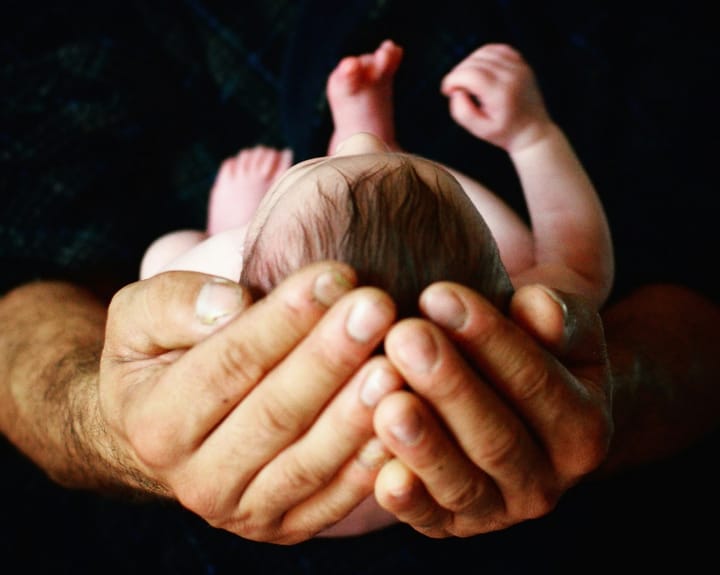Your brain keeps track of family, friends and foes

You need food. You need sleep. And — you guessed it — you need people. Being social isn’t just nice, it’s necessary and much more than chatting or going to parties.
From birth, we depend on others, not just for survival, but for emotional health and mental development. It’s a deep biological drive, as fundamental as eating or resting. We need social connection to thrive.
Social behaviors, whether cooperative or competitive, are vital to evolution. They help us build families, form groups, and respond to threats.
When we are cut off from social contact, things start to unravel. From metabolism to mood, the effects of long-term isolation can be devastating.
In rodents, social isolation leads to anxiety, poor memory, and even altered immune function. In humans, it’s linked to everything from depression and heart disease to diabetes and cancer. That’s how powerful our need for connection is.
But just like too little connection can harm us, too much negative social connection, like bullying, rejection, or chronic conflict, can tip the brain into anxiety or depression.
It’s all about balance, or what scientists call social homeostasis. Luckily, the brain has systems to regulate our social life, and it involves a lot of brain areas.
The brain circuit: smell, touch, and getting to know me
Let’s start with how the brain even knows someone’s there. In animals like mice, social interaction often begins with sniffing - yes, really.
I sort of hope my husband sees or hears me when I come home, before he smells me. Will make a mental note to ask him ... back to the mice.
They gather information from pheromones, chemical signals in the body, and process that information through brain regions like the amygdala and hypothalamus. These are brain regions involved in memory, emotions, and fundamental needs of the body.
Touch is just as important, especially early in life. A mother’s grooming doesn’t just feel good, it shapes her baby’s brain. In adults, soft touch activates special nerve fibers that send signals to the brain’s “feel good” areas, boosting connection and trust. These circuits make physical interaction feel rewarding and are linked to social motivation.
At the center of it all is the medial prefrontal cortex. This region helps us decide who to trust, who to avoid, and when to engage. If anywhere in the brain, this is where your "emotional intelligence" is nested.
It connects with the brain’s reward system, memory hubs like the hippocampus, and emotional areas like the amygdala. Together, they process social cues, reward kindness, and help us learn from past encounters.
Mating, mommying, and why we’re not always in the mood
Social interactions like sex, parenting, and caregiving all run on overlapping brain circuits. But they have their special connections too.
In males, the medial preoptic area drives sexual behavior. In females, the ventromedial hypothalamus takes the lead. These areas respond to pheromones, hormones like estrogen, and sensory signals to trigger mating behavior.
Parenting brings in more brain areas. Well, it does make sense that parenting is more complex than mating. (And nature is clever, to not inform us of that before becoming parents.)
The same MPOA area in both men and women coordinates baby care, from grooming to retrieving pups. From the hypothalamus, Oxytocin, the so-called “love hormone,” gets released in parents nursing their babies, and in women when lactating. That helps parents respond to their baby’s cries and movements.
A key area in the hypothalamus is designed by nature to link these nursing responses to hearing and touch, and is especially prominent in new moms.
Interestingly, these circuits can switch. After giving birth, female mice stop showing mating behavior and become aggressive protectors.
Their brain literally rewires to prioritize care over courtship. The story is not unheard of in humans either, and can explain some of the trouble young couples get into after having their first kid.
But more importantly, it’s one of the clearest examples of how social roles reshape the brain.
Foos, friends, and social rank
Aggression isn’t just about being mean, it’s a social survival skill. From defending territory to establishing dominance or protecting your family, animals (and people) use aggression to set boundaries.
In the brain, these behaviors come from deep circuits in the hypothalamus (again) and deep in the oldest part of the brain, the brainstem.
A brain region in the stem (called the periaqueductal gray) helps turn emotional signals into action. Whether it’s chasing, biting, or puffing up, this area coordinates movements that express aggression.
These responses are just like those with positive interactions, shaped by cues like smell, posture, or touch. Interestingly, the interpretation of the cues and which response the brain chooses can change depending on hunger, stress, or hormones like testosterone.
Social hierarchies are printed into the brain. Dominant and subordinate animals show distinct brain activity. For instance, winners in fights develop stronger circuits in areas of the brain that reinforce future aggressive behavior. Losers, in contrast, may avoid confrontation or become socially withdrawn.
Hormones like testosterone and oxytocin shape these responses, sometimes enhancing aggression or, conversely, promoting social peace. Winning increases dopamine, reinforces effort, and helps maintain social status.
Who’s dominant and who’s not emerges over time. And the system is highly plastic: circuits strengthen or weaken based on success, failure, and social context.
And the brain helps the animals (and us!) learn and remember their (our!) position in a group and thereby stabilize group dynamics. It´s surely better survival for a group that does not argue too much, and instead focuses on external enemies.
Helping others, feeling their pain
"Prosocial" behaviors, like helping, comforting, or sharing, start with empathy.
For empathy to happen, the brain has to notice someone else’s state, then feel it, and finally act on it.
This circuit is located in a newer, or more modern, or call it a more civilized area of the brain, in the cortex (the anterior cingulate cortex), which is active when we see someone in distress.
It links emotions, memory, and bodily feelings/states to create that shared experience we call empathy. Other areas help translate those feelings into action, like grooming, freeing a trapped friend, or sharing resources, like food.
Interestingly, rodents groom each other more after observing distress, and they can tell when another animal is unconscious versus asleep. These actions seem to rely on a mix of smell, sound, and feedback from social interaction.
The more familiar or similar the other animal is, the stronger the response. Hormones again play a big role. Oxytocin (the hormone sky-high in new parents) boosts empathy and helping.
The complexity of these circuits shows how even simple acts of kindness rely on a carefully coordinated brain network.
When circuits fail
When something goes wrong in these systems, social problems follow.
In autism, for example, key brain areas show altered connections. That includes the previously mentioned home of emotional intelligence in the medial prefrontal cortex. Some circuits are overactive, others underactive.
These changes can disrupt normal social memory, reward processing, and attention to social cues.
In PTSD, the brain’s emotional circuits become hyperalert. Regions like the amygdala go into overdrive, while the medial prefrontal cortex loses some of the usual control.
This leads to heightened fear, social withdrawal, and difficulty feeling safe, even with loved ones. That's one of the reasons PTSD is such a painful state to be in.
Across these disorders, neuromodulators like dopamine (rewards), oxytocin (love/empathy), and serotonin (mood) often play a key role. When their level are off, the circuits they support can falter.
This insight has opened new paths for treatment that go beyond symptoms to target the brain’s social wiring.
Pssst - remember to subscribe to our free newsletter!
About the paper that inspired:
First Author: Hao Li, China
Published: Nature Molecular Psychiatry, April 2025
Link to paper: https://www.nature.com/articles/s41380-025-03037-6




Comments ()